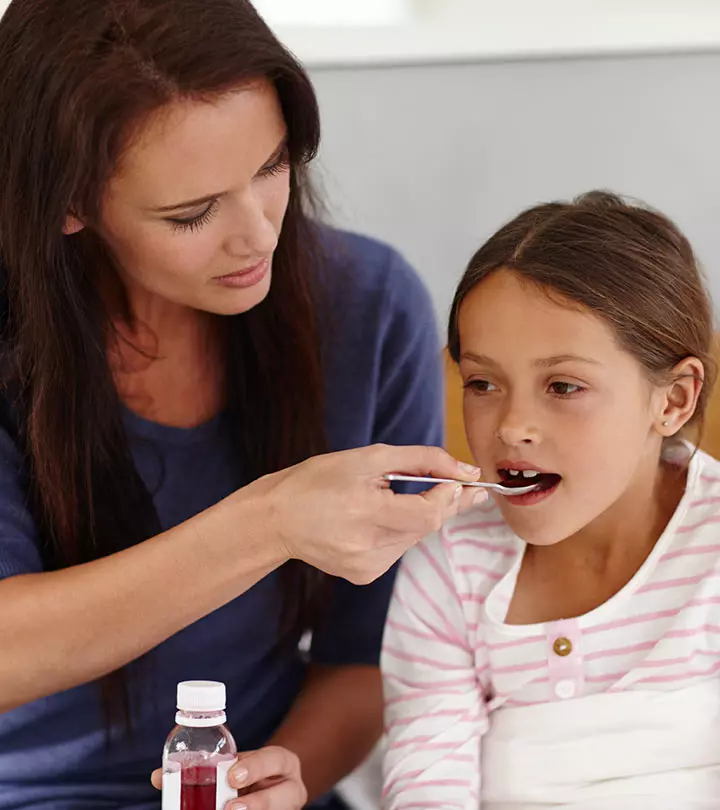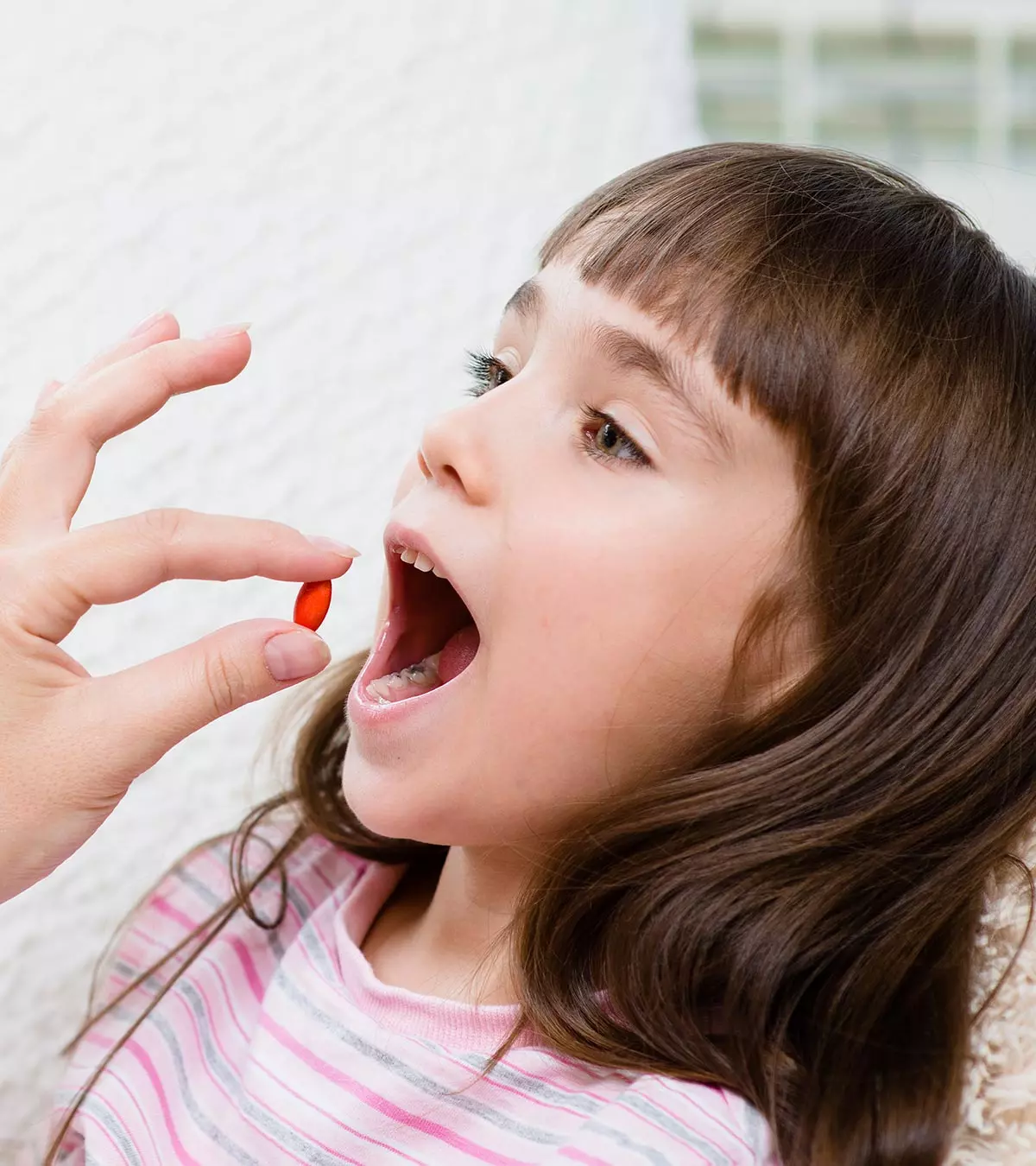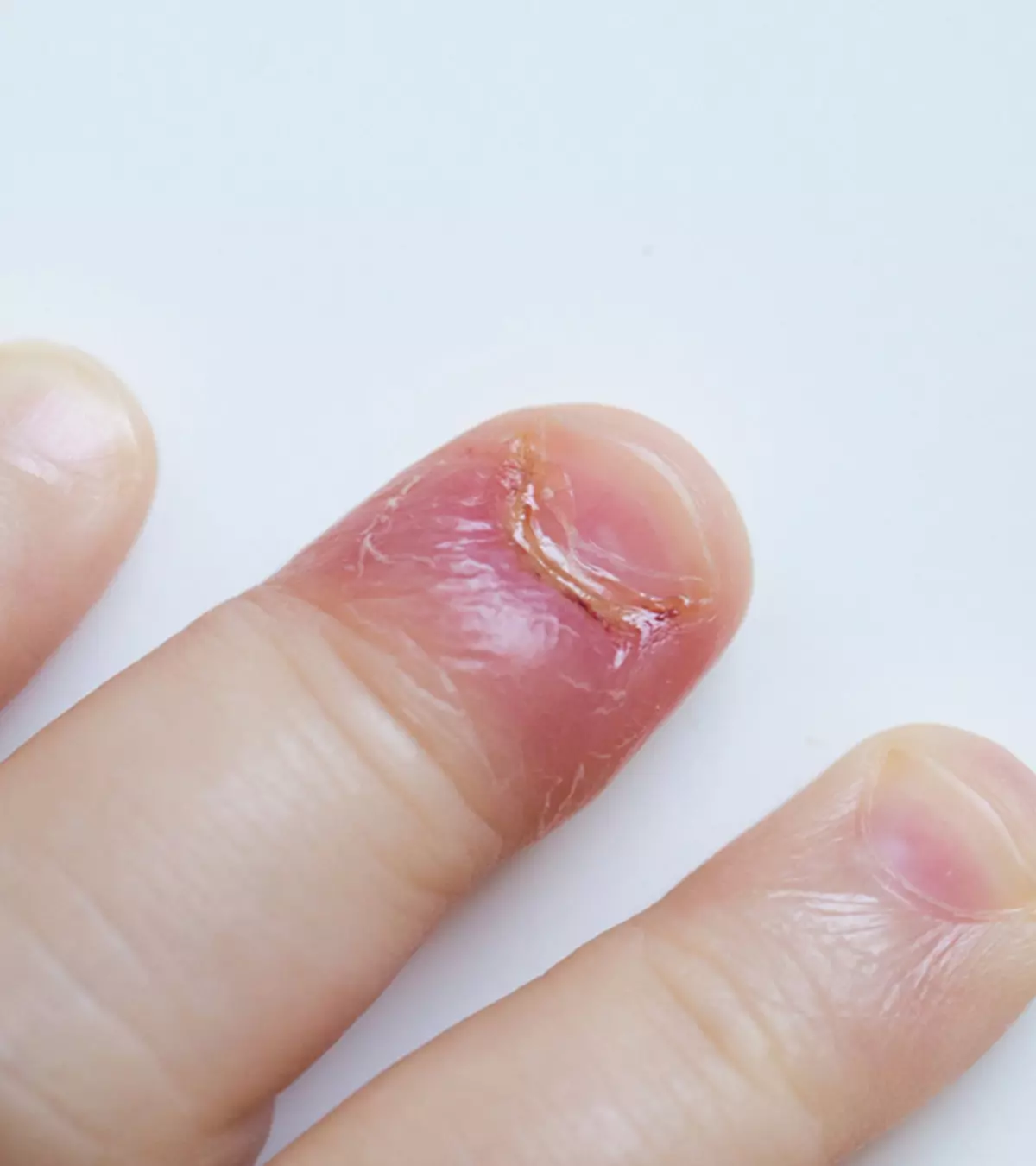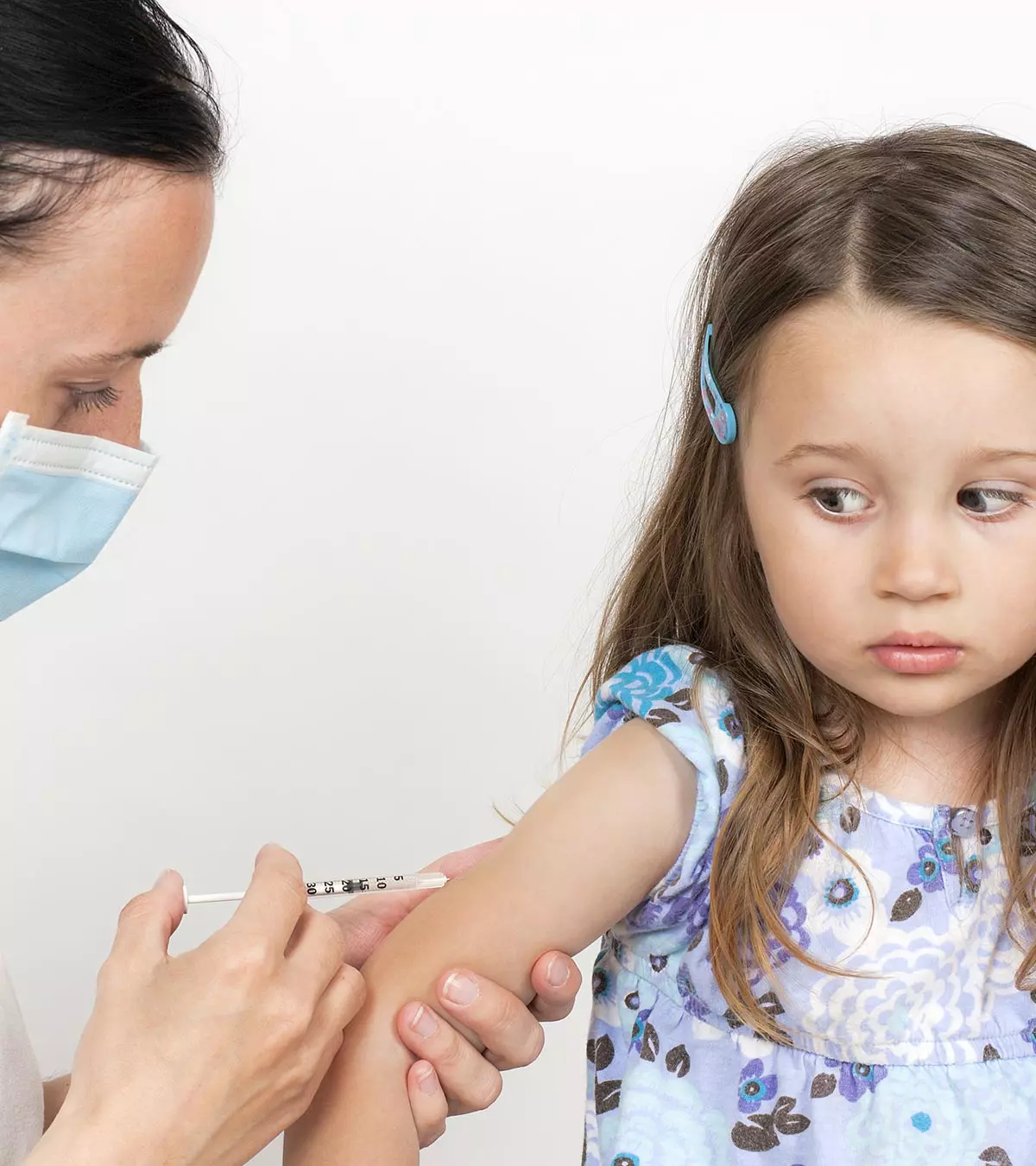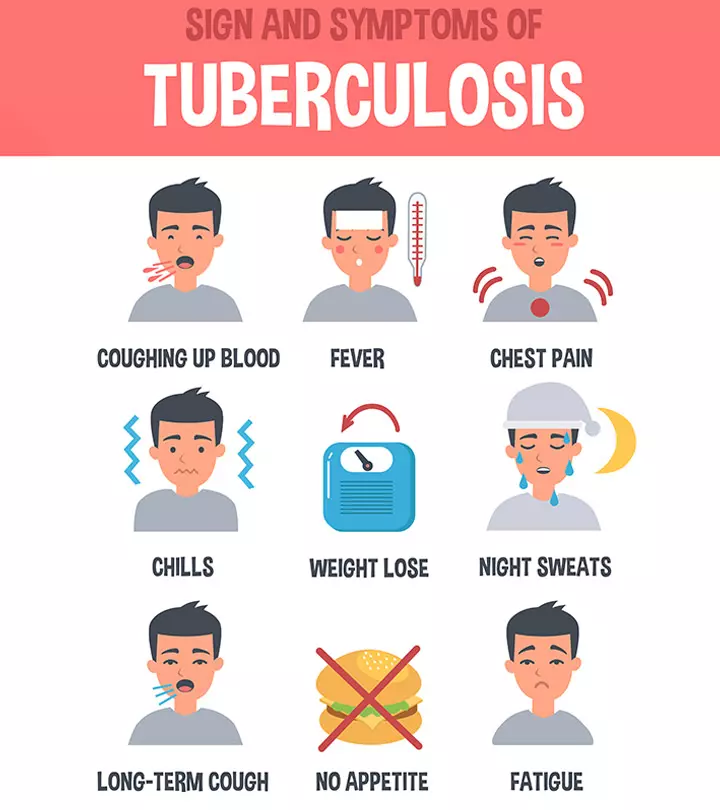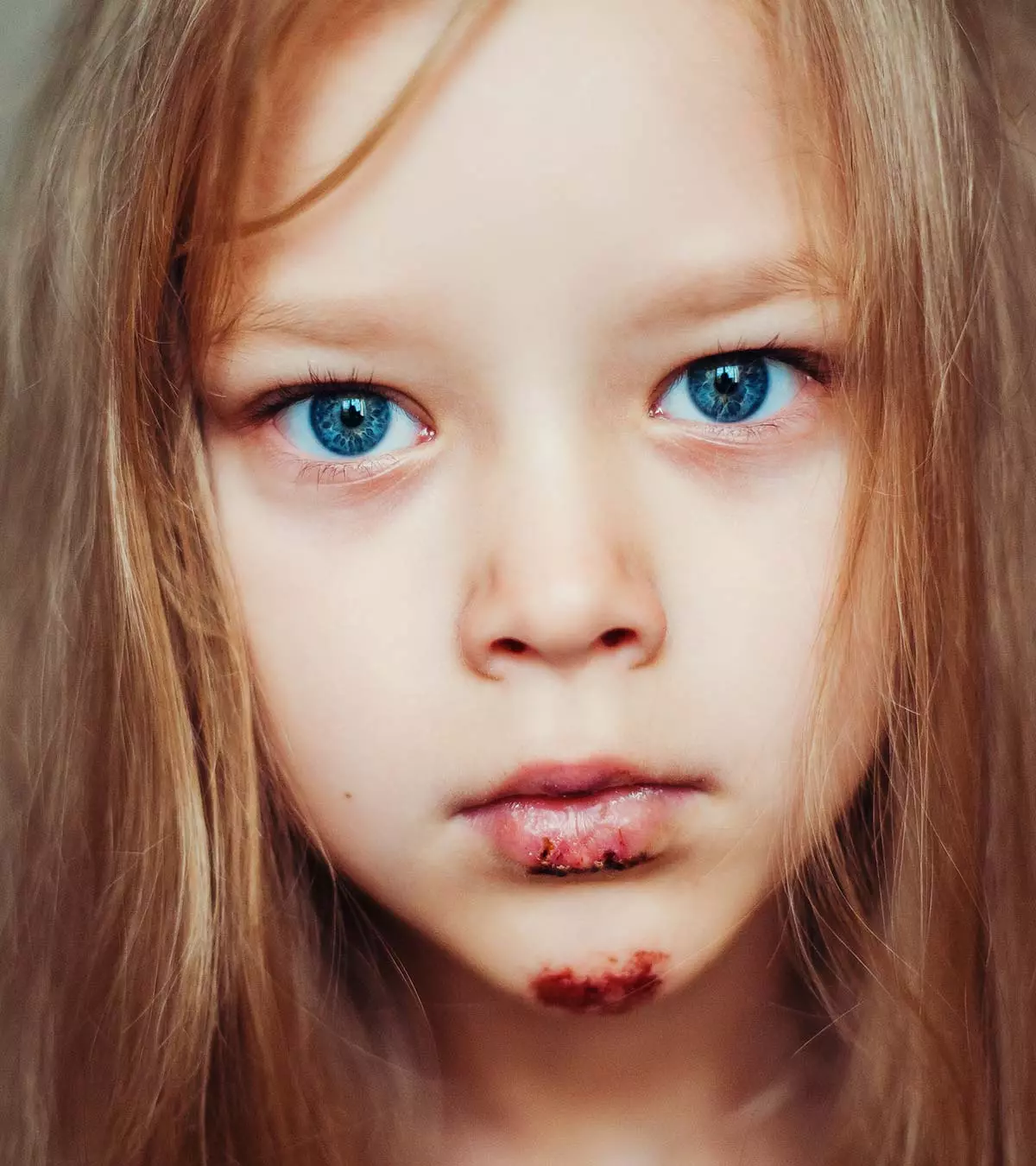
Image: Shutterstock
Dog bites in children are common as they are often not careful to stay away from an aggressive or confused dog. They may try to get close and play with the animal, but the dog could attack to defend its puppies or out of fear. You need to teach your child how to deal with dogs, even a pet. Read this post to know what to do if a child is bitten by a dog, the right time to seek medical assistance, and preventive measures.
Key Pointers
- Dogs typically bite when they feel threatened or are protecting something. However, infected dogs may bite for no apparent reason.
- If a child is bitten by a dog, they should receive first aid and be taken to a doctor. The severity of the bite will determine the appropriate treatment.
- If the dog’s vaccination status is unknown, the doctor may recommend a series of rabies injections.
- It is important to teach children how to identify behavioral cues of dogs, avoid teasing them, and interact with them appropriately.
- To prevent injuries, it is recommended to avoid unfamiliar or aggressive dogs, walk away confidently without running, and learn defense strategies against dog attacks.
What To Do After A Dog Bite?
First aid for dog bites
In younger children, dogs mostly attack their legs, which are easily reachable. Give first aid based on how severe the wound is:
- Minor wounds: Wash the wound carefully with water and soap. Apply some antibiotic cream to avoid any infection (1).
- Deep wounds: If the dog has bitten on the skin, causing perforationiFormation of tiny holes in the body, often caused due to an injury or medical condition and loss of blood, apply pressure with a clean, dry cloth to stop the bleeding. Visit a doctor immediately.
It is best to take your child to a doctor as soon as possible after a dog bite, minor or otherwise.
Once the first aid is done, check for the following information to help treat the child.
- If you know the owner of the dog, ask them if the dog has been given important vaccinations, including one for rabies.
- Know if the dog was provoked to bite, or the action was unprovoked.
- Give first aid to your child before taking them to a doctor.

Image: Shutterstock
When Should You Visit The Doctor?
The researchers from the Feinberg School of Medicine, Northwestern University performed a multicenter observational study from 26 pediatric hospitals in the US and found that dog bites account for 0.3% of all pediatric emergency department interactions.
Experts advise parents to see the doctor if:
- Your child has redness, swelling, pain, or irritation.
- You don’t know if the dog has infections or if it is vaccinated.
- The wound is in your child’s face or neck.
- The wound looks deep.
- The skin is punctured, posing a danger of bacterial infection.
- You are unable to stop bleeding after applying pressure for about ten minutes.
The doctor will ask you questions about the dog before they begin treatment.
 Quick fact
Quick factWhat Is The Treatment For Dog Bites?
The treatment will most likely include the below steps:
- Sponge the area to clean away any dust or dirt.
- Wash the cavity copiously with clean water, preferably running water from a tap.
- Culture wounds if they are infected.
- Remove devitalized tissue.
- Keep the puncture wounds open.
- Your doctor might prescribe antibiotics if there is a chance of infection.
- The doctor might also advise review of the wound within 24-48 hours to look for the signs of infection.
- Injuries on the hands and feet are managed in consultation with a surgeon (2).

Image: Shutterstock
The doctor will also decide whether to give tetanus injection and/ or and/or rabies immunoglobulini Defensive proteins produced by the immune system in response to foreign invaders such as bacteria and viruses to your child.
So, why do dogs bite? And can you prevent it?
Why Do Dogs Bite?
Dogs usually bite as a reaction to something (3):
- If they are infected with rabies, they might bite without reason
- If they find themselves in a stressful situation
- To defend themselves
- If they are scared, startled, or feel threatened
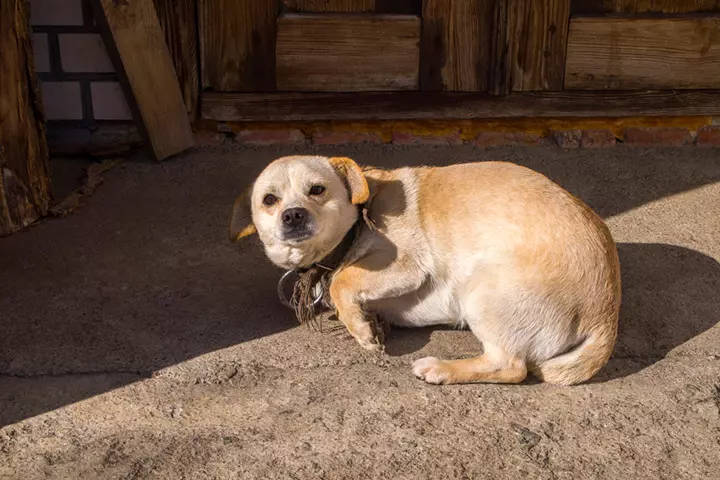
Image: Shutterstock
- To protect something, which is important to them, like puppies, food, or a toy
- When they are sick and want to be left alone
- If they are overly excited while playing
Therefore, teach your child to understand the mood of the dog before going near or playing with a dog. Also, you need to take some other measures to prevent dog bites.
What To Do If The Family Dog Bites?
Follow the procedure mentioned in the treatment section. In addition to that, analyze the reasons as to why the dog has bitten the child. Also, observe the dog for ten days for any symptoms of rabies.
When an unprovoked dog bites,
- The dog must have bitten unintentionally while playing with the kid. It may not be doing it again.
- Do not try to discipline your dog long after the incident because it cannot associate getting disciplined to something it has done in the past.
- If your dog remembers biting you, it may show signs of submission like bringing ears, tail, and head down.
- Practice no talk, no-touch, and no eye contact for a while and stay calm.
When the dog bites intentionally,
- If your dog is nipping without any apparent reason, you should consult a veterinarian as it may be due to some pain or hidden injury.
- If there are no medical causes, then look for reasons that are agitating the dog.
- Make sure it is not a reaction to some irritation caused by your child.
- Work with your dog and a professional trainer, if needed, to eliminate aggression by establishing rules, boundaries, and limitations for the dog.
- While doing this, keep your child away from the dog.
How To Prevent Dog Bites?
Here are some ways that might help in preventing dog bites.
- Ask your child to avoid approaching or touching an unfamiliar pet dog or a dog wandering on the street.
- If it is a pet dog and the dog owner is with the animal, always ask them before you pat or touch the dog, even if it is familiar.
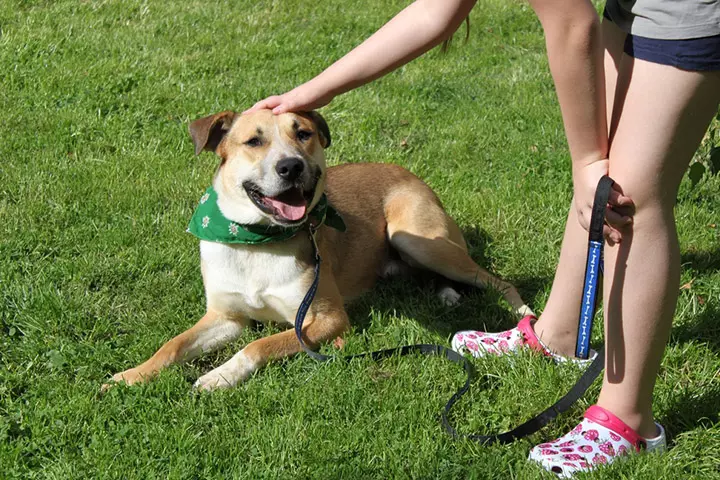
Image: Shutterstock
- Tell your child to follow the safety rules for children. Ask them to quietly and confidently walk away if met with an aggressive dog. Ask them to avoid making eye contact with the dog.
- If a dog is after the child, then they should stand still and then take a defensive position.
- If attacked by a dog, the child should cover their head and neck with their arms and curl into a ball.
- Tell your kid not to yell, run, or hit the dog.
- Help children understand the dog’s behavior. Make them realize that dogs, too, have likes and dislikes, just like they do.
- When a dog is resting in its crate, it shouldn’t be bothered.
- Keep your pet dog around your family. Isolating the dog may encourage bad temperament in it.
- Do not always keep the dog tied, as that can make it uncomfortable and eventually aggressive. Let it be free, but train it with proper measures.
- The child should not force the dog to play and let it go if it is not interested.
- Tell the child never to tease dogs or pull its ears and tail.
- Report stray dogs that are aggressive or problematic, as they could be ill and need medical assistance, and could be dangerous to other dogs and humans if left untreated.
- Don’t hand over a pet’s responsibility to children too early in their life or immediately after you bring the animal into your family. Initiate them slowly and supervise the activities.
- Help the child read the dogs’ body language:
- If the dog yawns, puts ears back, or raises a paw, it means the dog is worried about something.
- When a dog places its tail under its belly or between the legs, lies down with a leg up or stares at you with a stiffened body, it must be feeling threatened.
- And if the dog growls or snaps, it is in a bad mood and wants to be left alone.
 Be watchful
Be watchful- Ask your child never to take the muzzle off somebody else’s dog without permission from the owner since the dog may have a history of aggression or biting.
When you are teaching children about dog bite prevention and how to be safe, discuss animals and the need to treat them with respect and love.
If you are getting a pet home, put some dos and don’ts in place, and be mindful of how young children in the family interact with it.
In spite of all your preventive measures, you may not be able to stop a vagarious dog from biting the child.
Vaccinations To Prevent Infection From Dog Bites
A dog bite can be colonized with bacteria from the animal’s mouth. So, your doctor may recommend prophylactic therapyiTreatment given to prevent or reduce the recurrence of an illness for three to five days, which would be initiated within 12-24 hours of the injury. Here are a few injections that your child may need.
Tetanus Shot After A Dog Bite
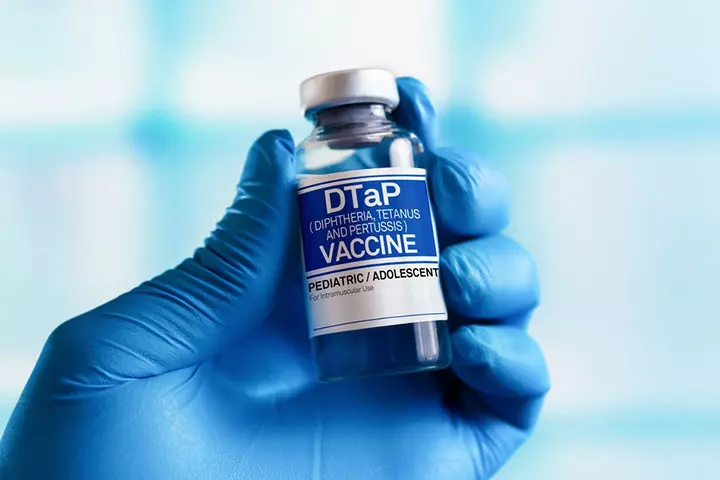
Image: Shutterstock
A tetanus shot is usually not given for dog bites, unless the wound seems to be contaminated with soil, and when the child’s vaccination is incomplete.
The tetanus infection is caused by Clostridium Tetani bacteria, which is mostly found in soil. It results in stiffness of the jaw, neck or abdominal muscles, and painful body spasmsiUncontrollable contraction and twitching of muscles that often causes temporary pain . It is a rare but harmful disease. So, if the dog bite is deep and appears contaminated, the doctor would examine your child’s vaccination history and treat accordingly.
One can prevent tetanus by taking tetanus shots. Your child might need a tetanus shot if:
- They have never taken the primary vaccination.
- When the child has not been vaccinated within ten years (4).
Rabies Shot After A Dog Bite
The chances of rabies infection might be high after a dog’s bite, if the dog has not been vaccinated or if its vaccination history is unknown. During such situations, your doctor might prescribe a series of rabies injections taken on specific days over a period.
Rabies is a zoonotic disease, transmitted to humans from animals. Domestic dogs are the most common carriers of the rabies virus.
The disease is almost always fatal in humans. It begins with no symptoms but gradually causes fatigue, headache, pain, and irritability. It then leads to severe symptoms such as seizuresiSudden and abnormal surges of electrical activity in the brain characterized by jerking body movements and loss of consciousness , hallucinations, and paralysis (5).
When To Get a Rabies Injection?
A preventive rabies vaccine is given to those who are likely to be exposed to the disease, and your child may not fall into this category unless you are traveling to an international destination.
A post-exposure rabies vaccine is given if:
- The child has not received the injection previously.
- The doctor finds it necessary to give it.
- You do not know anything about the dog that bit the child (here, too, the doctor will examine the wound before giving the injection).
The post-exposure vaccine has four doses — one dose given immediately after the bite, and the remaining on the third, seventh, and 14th days. In some cases, it could be five doses, administered on days 0, 3, 7, 14, and 28 (6).
A rabies immunoglobulin shot is also given along with the first dose (7).
Education about the right way of behaving around dogs and appropriate ways to manage dogs as pets could help prevent dog bites in children. depending on the severity. If the dog bite is minor, you may wash the affected area with mild soap and water, followed by an antibiotic cream application to prevent the risk of infections. However, if the wound is serious and induces bleeding and perforation, you must immediately seek medical attention. Further, ensure your child is not having any other infection while healing from the dog bite and support them emotionally to come out of the mental trauma.
Frequently Asked Questions
1. What happens if my dog bites a child?
You must take them for proper medical care if your dog bites a child. Inform their parents about the incident and exchange your contact details for staying updated about the child’s condition. If the situation demands and you wish to, you may offer to pay the hospital bills.
2. Can a child get sick from a dog bite?
A child bitten by a dog may get infected since there is a possibility of the dog carrying a harmful virus or bacteria. The child may experience diarrhea, vomiting, or ring-shaped rashes (8).
3. What happens if a vaccinated dog bites me?
If there is laboratory evidence of the dog’s vaccination, you may not need a vaccination against rabies after the bite. However, it is recommended to get the wound checked for confirmation and safety (9).
Infographic: How To Prevent Children From Dog Bites?
Dogs are considered man’s best friends and integral to many households. However, there have been many incidents of dog bites as well. Therefore, the infographic below suggests a few useful tips for keeping your children safe from dog bites and their associated complications.

Illustration: Momjunction Design Team
Protect your children from dog bites with this informative video that offers essential tips on prevention and response strategies.
References
1. Dog, cat and bat bites; HealthDirect
2. Marina Morgan; Dog bites; The British Medical Journal
3. Dog bite prevention; American Veterinary Medical Association
4. H. Cody Meissner; How should dog bites be managed to reduce risk of infection?; AAP News and Journals
5. Rabies; World Health Organization
6. WHO Guide for Rabies Pre and Post Exposure Prophylaxis in Humans; WHO
7. Rabies immune globulin (intramuscular route); Mayo Foundation for Medical Education and Research (MFMER)
8. Dogs – Risks to your child’s health; Our health service
9. Frequently Asked Questions on rabies; WHO
10. Preventing Dog Bites; The Nemours Foundation
Community Experiences
Join the conversation and become a part of our nurturing community! Share your stories, experiences, and insights to connect with fellow parents.
Read full bio of Dr. Anuradha Bansal
Read full bio of Dr. Ritika Shah
Read full bio of Swati Patwal
Read full bio of Ghazia Shah








